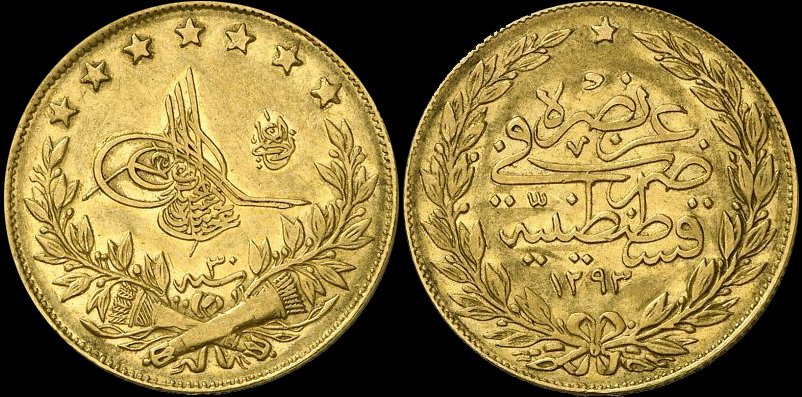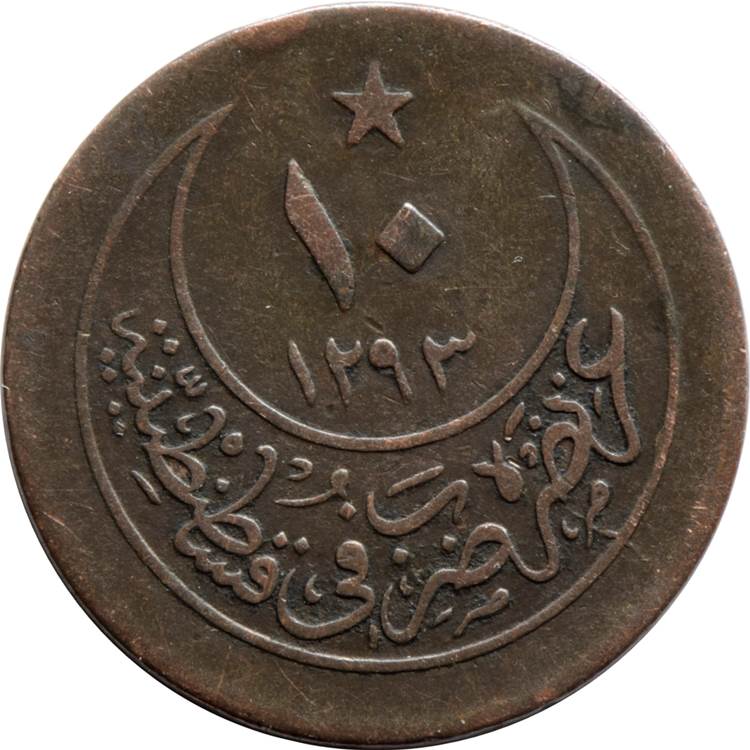-e.jpg)
ISTANBUL, NOT CONSTANTINOPLE
A legendary Megarian named Byzas is said to have founded the Greek city-state of Byzantion on the historical peninsula, and in the 4th century, the Roman Emperor Constantine established a new city on its site. This new capital, with seven hills like Rome, was initially called Nea-Roma (New Rome), but it became more commonly known as Constantinople (the anglicized form of Constantinopolis), meaning the city of Constantine.
"Struck in Qustuntunia"
This unique city, situated at the convergence of two continents, was referred to as “Qustuntunia” by the Arabs. Indeed, in the famous Hadith of the Prophet, it is mentioned as follows: "One day Qustuntunia will be conquered. Great is the commander who will conquer it. Great are his soldiers."
When the Ottomans conquered the city, they believed that preserving the name of the city as mentioned in the Prophet's words would bring blessings. The term "conquest" used in this hadith became a title for the sultan who captured the city: Fatih, meaning "the Conqueror."
From Sultan Mehmed II the Conqueror to Mehmed VI Vahideddin, coins were generally minted with the name Qustuntunia. The Ottoman gold, silver, and other metal coins all bear the sultan's seal on one side. On the other side, it was inscribed, “Struck in Qustuntunia,” and beneath it, the accession date of that sultan was written.

Stinpolis
Istanbul has never had a single name. While the Slavs called it Tsargrad and Europeans referred to it as Constantinopolis, Turks have called this unique city with various names such as Qustuntunia, Istanbul, Islambol, Asitana, Dar al-Saadah, Dar al-Aliyyah, Dar al-Saltanah, Dar al-Khilafa, and many more.
In most of the decrees and documents written in Istanbul, the name Qustuntunia is mentioned as the place where they were written. However, there are few decrees written with the name Istanbul.
In the language of the people, the name of the city is Istanbul. While some claim that it comes from the Greek “Stinpolis,” meaning "to the city," a more plausible explanation is that it is a corruption of Constantinopolis. The Greeks also used to say Kalipolis (Beautiful City) and Megalipolis (Great City).
The Ottomans, as an empire, didn't feel a need to change the foreign names of the cities and villages they conquered or incorporated into their territory, nor did they have an aversion to these names. However, they might have adapted the pronunciation of these names to fit their own phonetics.
Islambol: Abundance of Islam?
In the 17th century, especially among the religious scholars (ulama), the term “Islambol” (meaning “abundance of Islam”) briefly gained popularity. Recently, in religious works, “Islambol” appears as the place where they were printed. However, it is important to note that Istanbul has not always had a Muslim-majority population throughout its history, despite these historical references and naming variations.
In the period of Sultan Mustafa III, with an order issued in 1774, it was requested that the place where decrees and documents were written and coins were minted be referred to as “Islambol.” During this period, both “Islambol” and "Istanbul" were used in decrees and documents. In the later reign of Sultan Abdul Hamid I, the old term "Istanbul" was reinstated.
However, Sultan Selim III, in the early days of his reign, perhaps as a sign of respect to his father's memory, ordered the inscription “Struck in Islambol” on the coins. But shortly thereafter, both on the coins and in the decrees and documents, the name “Qustuntunia” was reverted to.


Due to Political Reasons
The Young Turks, who initially embraced Westernization, later turned to Islamic ideology during World War I in an attempt to attract the Muslim subjects of the empire, even though they had greatly diminished the power and prestige of the caliph. They emphasized the name “Dar al-Khilafa al-Aliyyah,” which means “The High Caliphate Abode,” to manifest the caliphate's authority. In a somewhat farcical manner, in March 1915, they even ordered the use of “Dar al-Khilafa al-Aliyyah” instead of “Qustuntunia.” However, this change didn't prove effective, and they eventually turned to Turkism as a solution.
What made Istanbul Istanbul?
On January 3, 1929, the Ankara government's General Director of Post, Telegraph, and Telephone sent a letter to the Universal Postal Union (UPU), headquartered in Bern, Switzerland, officially stating that the name "Istanbul" should be used instead of “Constantinople” or “Stamboul” from that point forward. Finally, with the Postal Service Law of March 28, 1930, it was announced that if the term “Constantinople” was used in letters from abroad, those letters would be returned.
Some argue that the Turkish Republic is what made Istanbul Istanbul, but drawing such a conclusion might be an exaggeration. That period marked a time when the city rapidly lost its Muslim Turkish identity. The monumental structures all around the city proclaim that it was the Ottomans who made Istanbul what it is. Not only "Constantinople" but also envelopes bearing pronunciations such as “Smyrna,” “Angora,” and “Trebizonde” would not be accepted.
A Black Budget Song
During the Turkish Republican era, Istanbul, although with some resistance, became the internationally recognized name for the city. In the memoirs of Charles Sherrill, the American ambassador to Ankara in 1932, he used the title “Istanbul, Not Constantinople” while describing his days in Turkey.
Nevertheless, it appears that the use of the name Constantinople continued in informal settings, as in 1953, a world-famous Canadian music group, The Four Lads, popularized a song titled “Istanbul, not Constantinople.” Inspired by the song “Puttin' On The Ritz,” the song was covered by various artists, even had Turkish lyrics written for it, and was used in films. During that time, it was among the top 10 hit songs worldwide.
This song, with music by Nat Simon and lyrics by Jimmy Kennedy, was rumored to have been commissioned by the government at the time, funded through a black budget. The first verse of the simple and humorous lyrics is as follows: "Istanbul was Constantinople. Now it's Istanbul, not Constantinople. Been a long time gone, Constantinople. Now it's Turkish delight on a moonlit night"
Polis in Anatolia
“Polis” is derived from the Greek word for "city." While some may argue that it comes from “poli+tika,” the term “politics” actually originates from “polis” and means “city administration” or “city government.”
The term “polis” is found in the names of many cities in Anatolia. For instance, Hadrianopolis (Edirne), Germanikopolis (Ermenek), Klaudiopolis (Bolu), Hierapolis (Denizli), Chariupolis (Hayrabolu), Gallipolis (Gelibolu), and Tripolis (Tirebolu) are some examples where this element is present in the city names.
The first three of these names belong to Roman emperors. Hiera is the wife of Mysian Telephos. Chariu means windy. Galli refers to the Celts.
Tripolis indicates three cities or dedication to the Father, Son, and Holy Spirit. The Trablus in North Africa and the Eastern Mediterranean carries the same meaning.
Önceki Yazılar
-
THE FIRST UNIVERSITY IN THE WORLD WAS FOUNDED BY MUSLIMS3.12.2025
-
WHO BETRAYED PROPHET ISA (JESUS)?26.11.2025
-
IT HAS BEEN MORE THAN 100 YEARS SINCE ITS ABOLITION, BUT... IS THE CALIPHATE BEING REESTABLISHED?19.11.2025
-
GREETINGS TO YOU, O OTTOMAN SANJAK!…12.11.2025
-
ROTHSCHILDS BROUGHT THE END OF THE OTTOMAN EMPIRE!5.11.2025
-
SHEIKH BEDREDDIN, SON OF THE QADI OF SIMAVNA29.10.2025
-
THE ROOTS OF THE ENGLISH POLITICIAN IN TURKEY – THE TRAGIC END OF ALI KEMAL BEY22.10.2025
-
WHERE IS THE RED APPLE?15.10.2025
-
THE ABBASIDS IN ANATOLIA1.10.2025
-
IMAMS AND MUFTIS AS OFFICERS IN THE OTTOMAN ARMY24.09.2025